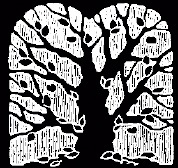In 1991 Rabbi Schoffman approached the leadership of both congregations expressing a desire to retire. This request, while not unexpected, created quite a ripple effect in the community. Attempts had been made during the 1970’s to merge the two congregations, with no result. In 1988 meetings had again been convened for the same purpose, with again no positive outcome. The loss of joint clergy should have prompted more discussion but it seemed to have the opposite effect. It had been over 16 years since a search had been instituted, and the Rabbi market had changed considerably. At this time, with B’er Chayim undertaking sole responsibility for hiring and paying for a Rabbi, reconsideration of the dues structure had to take place. This led to the biggest dues increase in the history of the congregation. However, this increase in financial resources allowed B’er Chayim the ability to enter the search on a level playing field with other congregations.
Upon Rabbi Schoffman’s retirement, he was named Rabbi Emeritus and continued to be active with both congregations in an advisory role. In 1991 Rabbi Scott Gurdin was hired as a full-time Rabbi. We were his first congregation after his ordination, and both he and the congregation learned from each other. B’er Chayim was entering a phase in its life with the biggest Sunday School enrollment ever and with more involvement by more people than ever. In 1994 there were 71 students enrolled, from pre-schoolers to confirmation students and every single bit of space in the Sunday School building was pressed into use. In fact, confirmation classes were held that year in Dr. Phil Lavine’s office across the street at 101 S. Centre St. to alleviate the crowded situation. Each year three or four students graduated through the confirmation program.
B’er Chayim became the center of social activities, especially those involving the children of the community, and many new arrivals in Cumberland and Western Maryland became members of B’er Chayim. Often, these new members had a more traditional or conservative background. Rabbi Gurdin introduced more conservative elements and the congregation slowly began to become more traditional in its rituals and services.
In 1997 new Torah covers were donated by Doug and Betsey Schwab in honor of their sons Eli’s and Avi’s Bar Mitzvahs. Additional refurbishing of the Sanctuary was done, with new carpeting being donated by Arthur and Bernice Friedland and reupholstering of chairs on the bimah by Amy Schwab Owens in honor of the Bar Mitzvah of her son Lucas.
Adult Hebrew classes, retreats at Camp Peniel, Purim carnivals, a YMCA Basketball League Maccabee Team, Relay for Life Teams, Tu B’shevat and model seders were just a portion of the activities which were going on at B’er Chayim. Rabbi Gurdin was involved in an outreach program to the newly built federal prison.В В
During the 1990’s, financial stability was a goal of each president and board. In 1992 under the leadership of President Betsey Hurwitz- Schwab, the B’er Chayim Congregation Endowment Fund was established as a tribute to the memories of Harold and Faye Hersch. It was initially funded by a generous gift given by their children and by charter contributions by the Schwab and Brock family. Members were invited to contribute and over time the endowment began to grow.
President Phil Lavine initiated an aggressive fundraising program identified as Temple 2000, which set specific fundraising goals to be attained by the year 2000. In addition to the growth of the endowment fund, specific fund raising activities were investigated and became part of the annual budget process.
It was a serious struggle for a congregation the size of B’er Chayim to maintain both a building and the services of a full-time rabbi. However, the congregation was firmly committed to maintaining a vibrant Jewish community in Western Maryland. As each year passed, both Beth Jacob and B’er Chayim congregations began to shrink. Whether by families moving away, older citizens moving closer to their out-of-town family members, or by attrition, the end result was that the Jewish community declined in size. Once again, in 1996, discussions were begun to consider merging the two congregations. Under the leadership of Rabbi Gurdin, President Phil Lavine and Beshie Mandell, President of Beth Jacob, discussions began to look promising and after a few delays an agreement was reached in 1998. Torahs, Yahrzeit tablets, and other ritual objects were moved to B’er Chayim, monies from Beth Jacob were placed in the Endowment Fund, the chapel was emptied and the move was completed. New prayerbooks were purchased, which were gender-inclusive and included more Hebrew and prayers.В В
In 1996 the combined congregations began a tradition of honoring a “Congregant of the Year” during the High Holiday season. This was both a tribute to the individual and a vehicle to help raise funds to support the congregation. The first “Congregant of the Year” was Leonard Schwab – 1996; Bruce Gurenson – 1997; Gayle Griffith, 1998; Beshie Mandell – 1999; Polly-Jo Hightower – 2000; Betsey Hurwitz-Schwab – 2001 and, most recently, Bob Manasse – 2002.В В
Rabbi Gurdin accepted a new pulpit in spring of 1998 and B’er Chayim was again searching for a Rabbi. Unfortunately, it was a more difficult process this time, and B’er Chayim found itself for the next five years using a series of part-time or interim Rabbis. In 1998-1999 Rabbi Shelley Kovar Becker officiated. Traveling every other weekend from New York City with her husband Marty, Rabbi Becker was B’er Chayim’s first female Rabbi. Rabbi Becker provided innovative services, began Saturday Torah study sessions and shared her strong social action interests. Rabbi Daniel Lowy traveled every other weekend from Wheeling, WV during 1999-2001 to provide services for B’er Chayim. He had served previously in this pulpit, in 1955-1958, and had always maintained contacts with community members. After his retirement from the rabbinate in Wheeling, he offered his services, which were much appreciated. Rabbi Tracy Klirs served as B’er Chayim’s interim Rabbi from 2001-2002. Commuting alternate weekends from the Washington, DC area, she continued the tradition of Saturday Torah study, tot shabbats and Saturday services in addition to her other teaching and pastoral duties.
In 1999 two stained glass panels from the front doors of the former Beth Jacob building on Columbia Street were donated to B’er Chayim. These panels, shown on this page, were installed in the front entryway of B’er Chayim.В
In 2001 it came to the attention of the Board of B’er Chayim that at least one and perhaps several of the six Torahs in the Ark needed some additional care. The Torah scrolls, all over 100 years old, had become “unkosher” due to missing or damaged words. Rabbi Menachim Youlis, the scribe who repaired the Torahs, described them as being a treasure trove, and rich in history. He was able to identify the age and origin of each, and even who the original scribe was for two of the scrolls.
B’er Chayim was able to maintain its tradition of Shabbat and Holiday services, social activities and community life during the five years without a full-time Rabbi by calling upon many of its members for extraordinary participation. During this time congregants took on active responsibility in all aspects of religious observance, from conducting Shabbat services to conducting funerals, from working with B’nai Mitzvah students to working with confirmands. Many devoted and involved officers and Board members continued to strive towards the goal of a strong community.
A very diligent and dedicated Search Committee worked throughout these years attempting to find a candidate for our position of Rabbi. Many hours were spent in meetings, on video and audio conference calls with potential candidates, many candidates visited B’er Chayim and were interviewed for the position. Until late fall of 2002 these efforts remained fruitless. At that time Rabbi Stephen Sniderman accepted the offer of a full-time position. In January of 2003 Rabbi Sniderman became B’er Chayim’s Rabbi.
As B’er Chayim celebrates its 150th anniversary, with a renewed sense of purpose and a reinvigorated congregation, it is truly a time to pause and reflect upon the history that has brought us to this time and place. Few congregations have reached this milestone, and it is only through the perseverance and commitment of each successive generation that a Jewish community thrives in Western Maryland.


